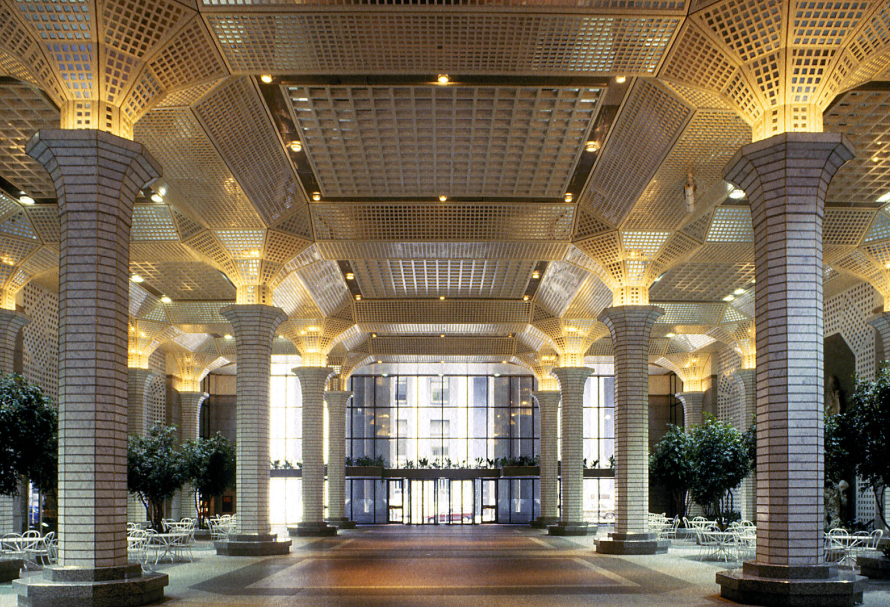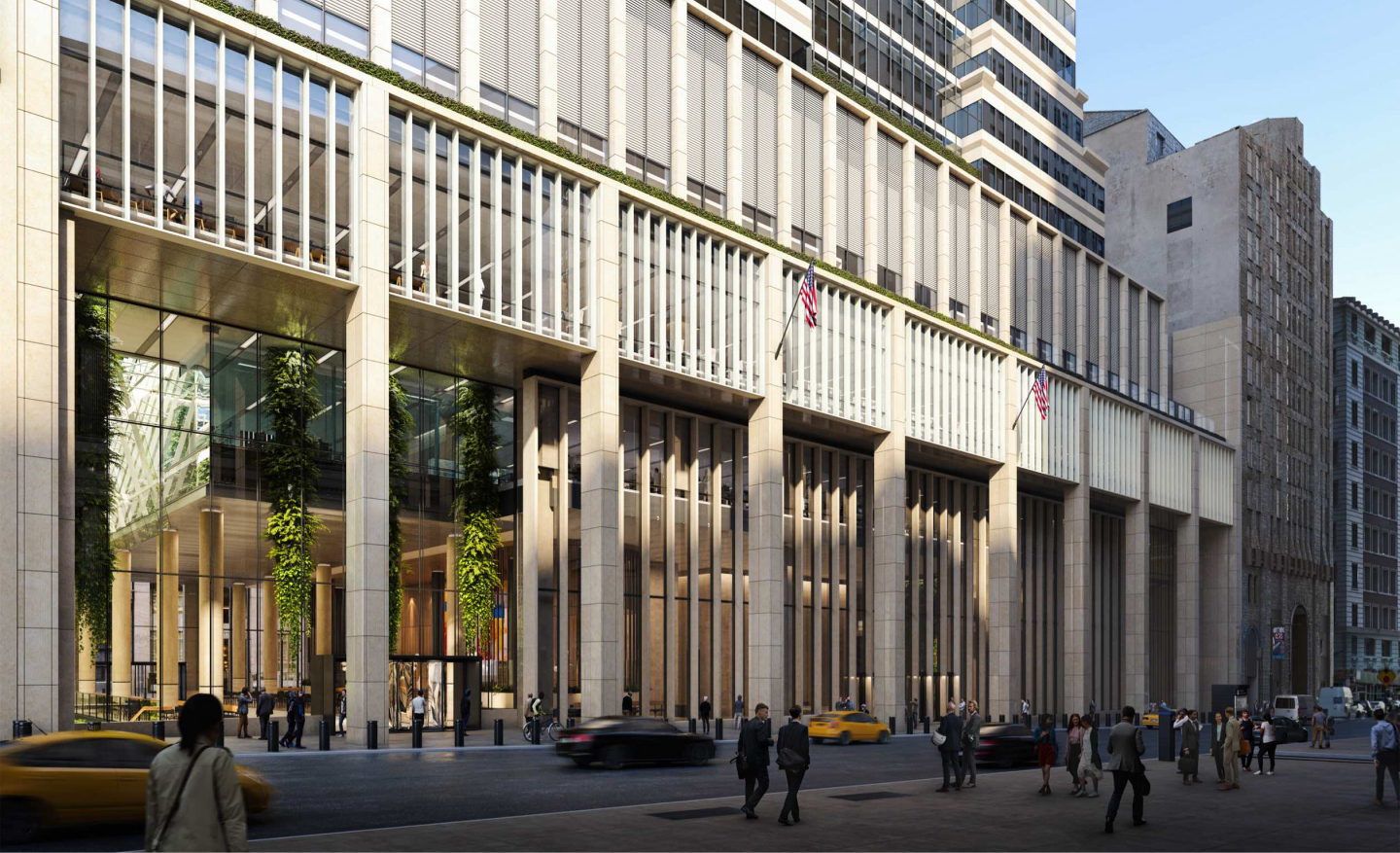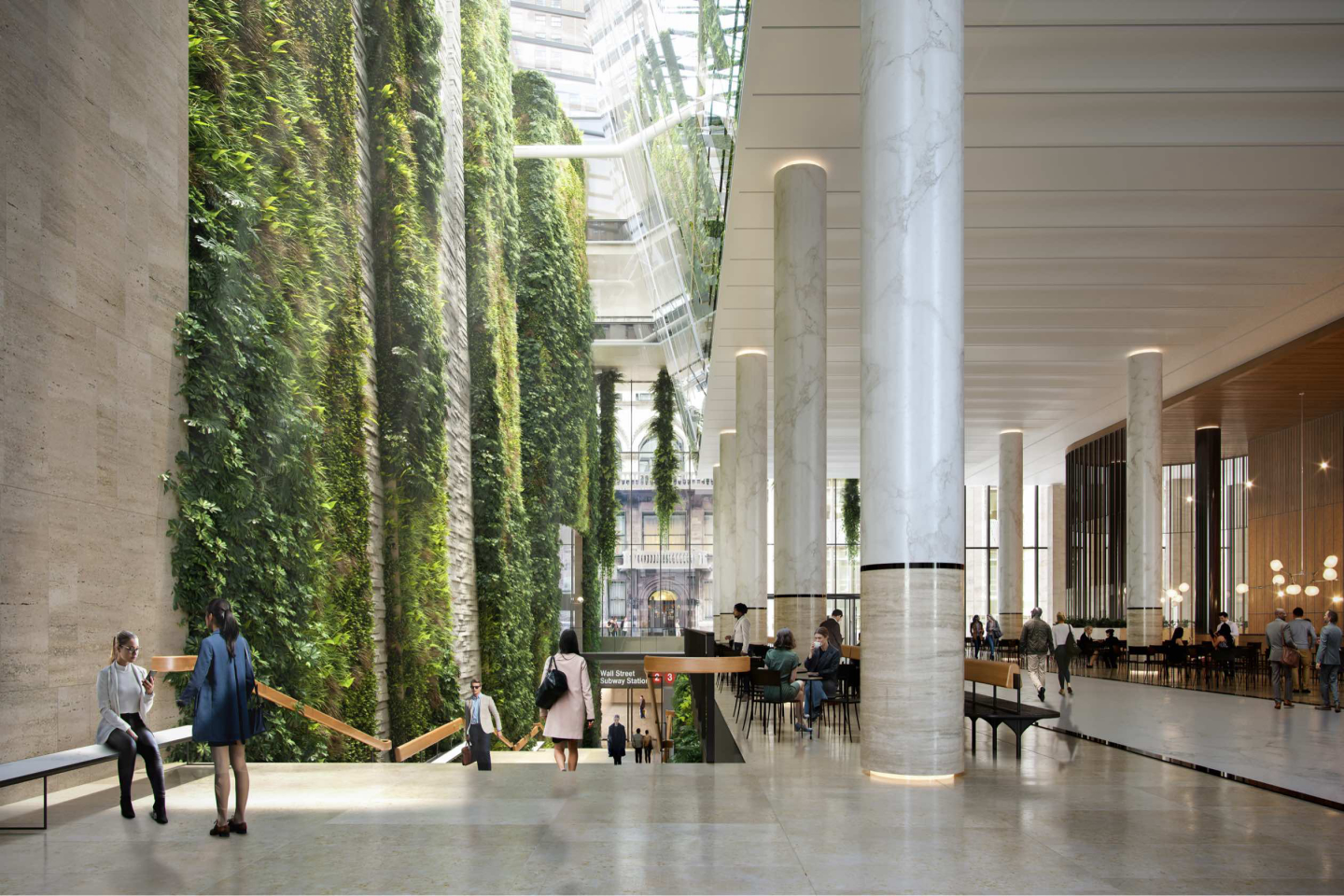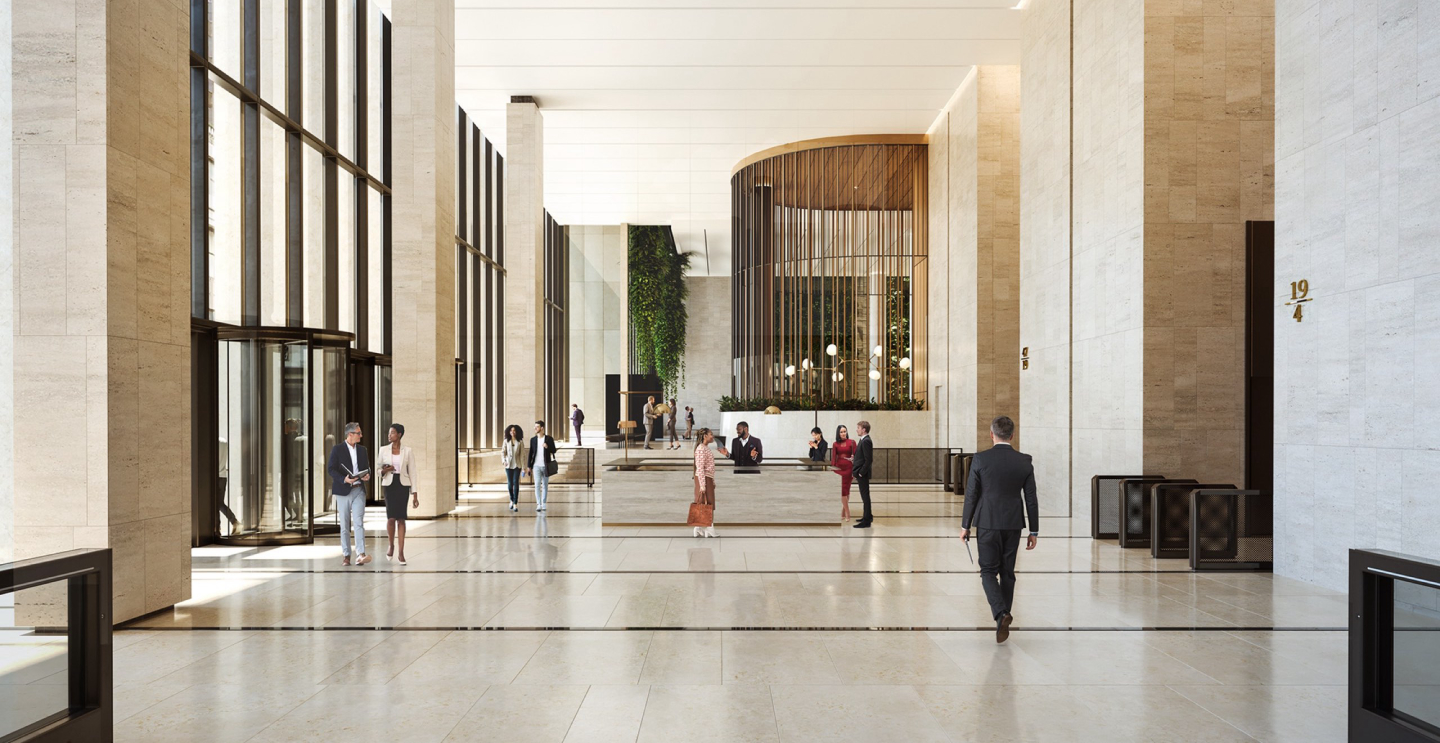Deep in the narrow canyons of the financial epicenter of the West lies an out-of-place yet overlooked courtyard that is as idyllic and palatial as the fanciful gardens of the East. Situated on a lot between New York’s Pine and Wall streets is a behemoth of postmodern corporate style—60 Wall Street, at one point the largest corporate building in the city’s Financial District.
The skyscraper—including its distinctive lobby—was designed by the late Irish-born architect and Eero Saarinen protégé Kevin Roche and John Dinkeloo of Kevin Roche John Dinkeloo and Associates, also known for the Ford Foundation and the 1967 expansion of the Metropolitan Museum of Art, both notable for their impressive indoor gardens. 60 Wall Street is a shapeshifting mashup of architectural styles; Like the Art Deco movement architects did in the early 20th century, Roche embellished his work with ancient motifs filtered through the lens of modern engineering: the exterior is a fusion of Greek Revival, Neoclassical and Postmodernist elements, with their complex structural ornamentation details modulated as simpler shapes.

Pillared halls of paired stone columns 70 feet high anchor the base of the 51-story tower, creating the illusion of a granite curtain framing the entrances to the north and south. Within this facade, an architectural colonnade transfers passage to a monumental atrium designated by the city as a “privately owned public space,” a type of zoning regulation incentive that grants extra air space and floor area in exchange for open usable space dedicated to public enjoyment. The style of this interior alludes to Mughal design: it’s a winter garden with flowering octagonal columns supporting mirrored ceilings framed with white trelliswork, inducing a reflective kaleidoscopic effect that Roche has been known to utilize.

The atrium offers an escape from the claustrophobia of the Financial District. In the morning, a rush hour crowd workers hurries through it on their way to their offices and for the rest of the day, a mix of people from all walks of life convene beneath the seasonal plantings and 20-foot-tall ornamental white stones that adorn its interior walls.
Like all architectural styles have at some point, Postmodernism is passing through its own personal phase of rejection by the status quo. A gauntlet of renovations masked as “updates” by real estate developers who view the style as outdated, undesirable for modern corporate tenancy and therefore, in theory, bad for the bottom line, have occurred in such spaces across the United States in recent years, including the destruction of the AT&T Building atrium at 550 Madison and the Hall of Gems and Minerals at the American Museum of Natural History, both in New York.

60 Wall Street is facing a similar fate. Its current occupant, In the next few months, Deutsche Bank, is moving to the Time Warner Center at Columbus Circle. Recent changes in leasehold have left 60 Wall Street vulnerable to radical renovations: one party in the ownership group, the Paramount Group, have already redeveloped another KRJDA lobby at the old Deutsche Bank building on West 52nd Street, stripping it of any unique qualities in favor of something more sterile—and considerably bland. It was, in my opinion, a tragic loss of one of the more beautiful spaces in New York City, one that should never happen again.




However, the Paramount Group has construction plans, set to begin in summer 2022, to demolish the 60 Wall Street atrium inside and out in favor of a narrow skylight and a 100-foot-tall greenwall design by Kohn Pedersen Fox. In addition, the exterior stone colonnade will be targeted for intense updating to the point of total unrecognition, despite its overt charm and attention to detail. Lauding these cliché design decisions as “new” and “lively” comes at the cost of another huge blow to the historical legacy of Roche’s genius.
The KRJDA design of the 60 Wall Street atrium is beloved by many fans of the Postmodern movement who time and time again face the need to justify its continued architectural existence as iconic examples of the era are routinely misunderstood and destroyed. In 2018, the AT&T Building by Philip Johnson became New York’s youngest landmark; however, its designation was exterior-only and could not stop the fate of its beloved PoMo lobby. Without better preservation of these works of art, we face a bleak future: one without style and robbed of unique architectural experiences.










 in your life?
in your life?

